Tag: Bones
-
🧬 Sodium’s Role in Bone Cell Activation
In terrain-deficient individuals — especially those with low sodium — osteoblasts may be underpowered, unable to deposit bone matrix effectively. 🧂 Salt-Inducible Kinases (SIKs) and Bone Formation Recent studies have identified salt-inducible kinases (SIK2 and SIK3) as key regulators of bone growth. Inhibiting these kinases mimics the effects of PTH: This suggests that salt-linked pathways…
-
🧬 How Sodium Shapes Calcium Signaling
🔹 Sodium-Calcium Coupling 🔹 Vault Consequence Vault logic: sodium maintains calcium coherence — without it, bone terrain fractures from the inside. 🦴 Sodium-Calcium Balance & Bone Health Factor Effect of Low Sodium Bone Impact Na⁺/Ca²⁺ exchanger Reduced efficiency Intracellular Ca²⁺ buildup Osteoblasts Mitochondrial stress ↓ bone formation Osteoclasts Overactivation ↑ bone resorption Calcium excretion ↑…
-
HFE H63D & VO2 max
SMOKE EM IF YOU GOT EM The HFE H63D is a single-nucleotide polymorphism in the HFE gene (c.187C>G, rs1799945), which results in the substitution of a histidine for an aspartic acid at amino acid position 63 of the HFE protein (p.His63Asp). HFE participates in the regulation of iron absorption. Homozygous H63D variant can occasionally be the cause of hemochromatosis. It is also…
-
Keratan sulfate (KS) aka keratosulfate
Not to be confused with Keratin. Keratan sulfate (KS), also called keratosulfate, is any of several sulfated glycosaminoglycans (structural carbohydrates) that have been found especially in the cornea, cartilage, and bone. It is also synthesized in the central nervous system where it participates both in development and in the glial scar formation following an injury. Keratan sulfates are large, highly hydrated molecules which in joints can act as a cushion to…
-
Von Willebrand factor (VWF) is a large multimeric glycoprotein present in blood plasma and produced constitutively as ultra-large VWF in endothelium (in the Weibel–Palade bodies), megakaryocytes (α-granules of platelets), and subendothelial connective tissue
Von Willebrand factor (VWF) is a blood glycoprotein that promotes hemostasis, specifically, platelet adhesion. It is deficient and/or defective in von Willebrand disease and is involved in many other diseases, including thrombotic thrombocytopenic purpura, Heyde’s syndrome, and possibly hemolytic–uremic syndrome. Increased plasma levels in many cardiovascular, neoplastic, metabolic (e.g. diabetes), and connective tissue diseases are presumed to arise from adverse changes to the endothelium, and may predict an increased…
-
Osteopontin (OPN)
Osteopontin (OPN), also known as bone /sialoprotein I (BSP-1 or BNSP), early T-lymphocyte activation (ETA-1), secreted phosphoprotein 1 (SPP1), 2ar and Rickettsia resistance (Ric), is a protein that in humans is encoded by the SPP1 gene (secreted phosphoprotein 1). The murine ortholog is Spp1. Osteopontin is a SIBLING (glycoprotein) that was first identified in 1986 in osteoblasts. The family of non-collagenous proteins known as SIBLING proteins, standing for small integrin-binding ligand, N-linked glycoprotein, are components of the extracellular matrix of bone and dentin. Evidence shows that these proteins play key…
-

“Ye therefore, who seek in science a means to satisfy your passions, pause in this fatal way: you will find nothing but madness or death.”
This is the meaning of the vulgar tradition that the devil ends sooner or later by strangling sorcerers. Eliphas Levi, Transcendental Magic Also… “We have said that impassioned ecstasy may produce the same results as absolute superiority, and this is true as to the issue but not as to the direction of magical operations. Passion…
-

The chief cells of the parathyroid glands sense the amount of calcium in the blood, and release the calcium-increasing hormone parathyroid hormone (PTH) accordingly
Parathyroid chief cells (also called parathyroid principal cells or simply parathyroid cells) are one of the two cell types of the parathyroid glands, along with oxyphil cells. The chief cells are much more prevalent in the parathyroid gland than the oxyphil cells. It is perceived that oxyphil cells may be derived from chief cells at puberty, as they are not present at…
-
Gastric inhibitory peptide aka GIP and receptors
Gastric inhibitory polypeptide or gastric inhibitory peptide also known as glucose-dependent insulinotropic polypeptide abbreviated as GIP, is an inhibiting hormone of the secretin family of hormones. While it is a weak inhibitor of gastric acid secretion, its main role is to stimulate insulin secretion. GIP, along with glucagon-like peptide-1 (GLP-1), belongs to a class of molecules referred to as incretins. Synthesis and transport GIP is derived from a 153-amino acid proprotein encoded by…
-
Neuromedin U
Neuromedin U (or NmU) is a neuropeptide found in the brain of humans and other mammals, which has a number of diverse functions including contraction of smooth muscle, regulation of blood pressure, pain perception, appetite, bone growth, and hormone release. It was first isolated from the spinal cord in 1985, and named after its ability to cause smooth muscle contraction in the uterus. Structure Neuromedin…
-
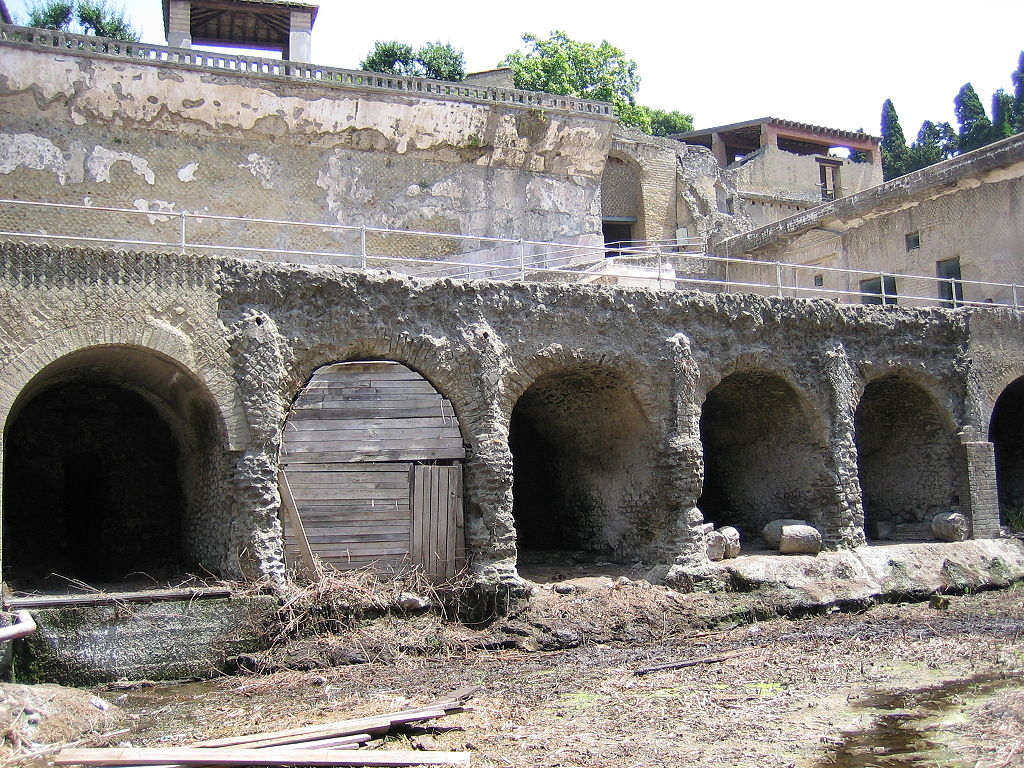
Herculaneum was an ancient Roman town buried under volcanic ash and pumice in the Eruption of Mount Vesuvius in 79 AD.
Herculaneum (Neapolitan and Italian: Ercolano) was an ancient Roman town, located in the modern-day comune of Ercolano, Campania, Italy. Herculaneum was buried under volcanic ash and pumice in the Eruption of Mount Vesuvius in 79 AD. Like the nearby city of Pompeii, Herculaneum is famous as one of the few ancient cities to be preserved nearly intact, as the ash that blanketed the town protected it against…
-
Catacombs of Saint Gaudiosus
Are you ready for a journey into the macabre underbelly of Naples? Welcome to the Catacombs of San Gaudioso, where the dead don’t just rest – they put on a show! Nestled beneath the bustling Rione Sanità district, these 4th-century catacombs are a veritable playground for the morbidly curious. Here’s what awaits you in this…
-
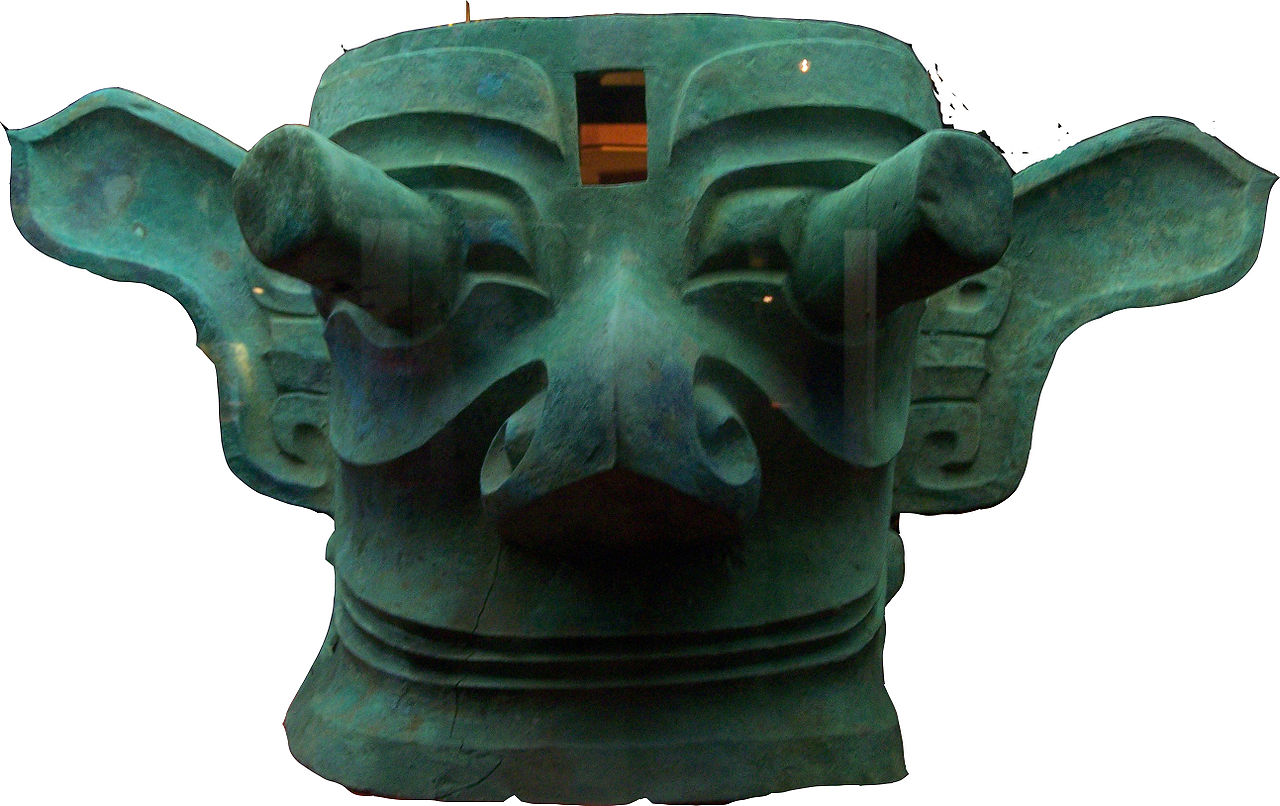
Shi (personator)
The shi (Chinese: 尸; pinyin: shī; Wade–Giles: sh’ih; lit. ‘corpse’) was a ceremonial “personator” who represented a dead relative during ancient Chinese ancestral sacrifices. In a shi ceremony, the ancestral spirit supposedly would enter the descendant “corpse” personator, who would eat and drink sacrificial offerings and convey messages from the spirit. James Legge, an early translator of the Chinese classics, described shi personation ceremonies as “grand family reunions where the…
-
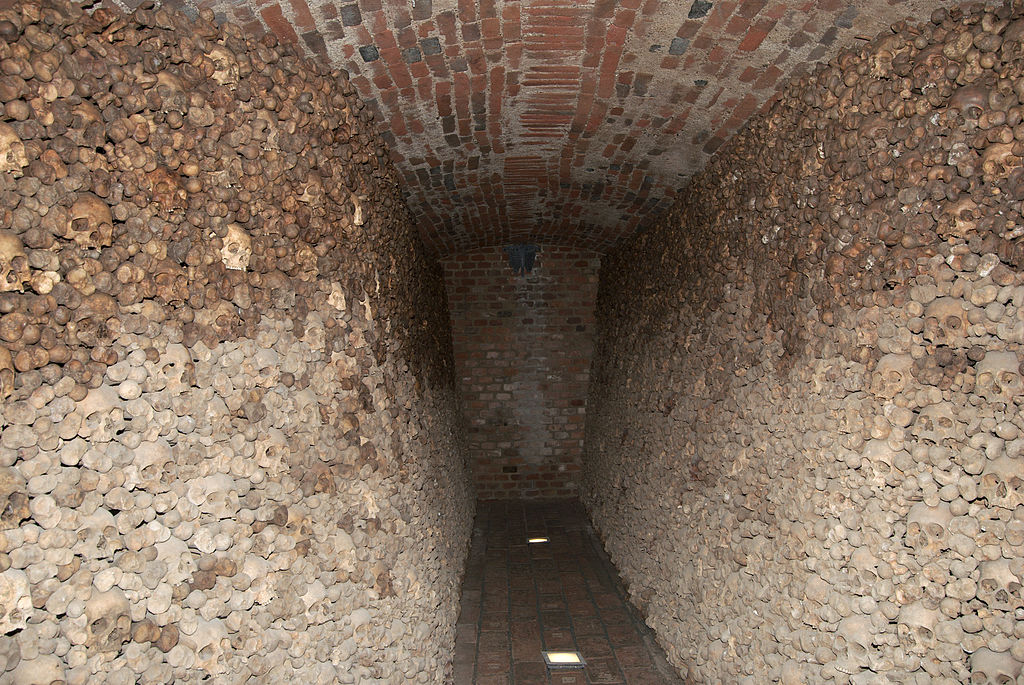
Brno Ossuary holds the remains of over 50 thousand people
Brno Ossuary is an underground ossuary in Brno, Czech Republic. It was rediscovered in 2001 in the historical centre of the city, partially under the Church of St. James. It is estimated that the ossuary holds the remains of over 50 thousand people which makes it the second-largest ossuary in Europe, after the Catacombs of Paris. The ossuary was founded in the 17th century,…
-
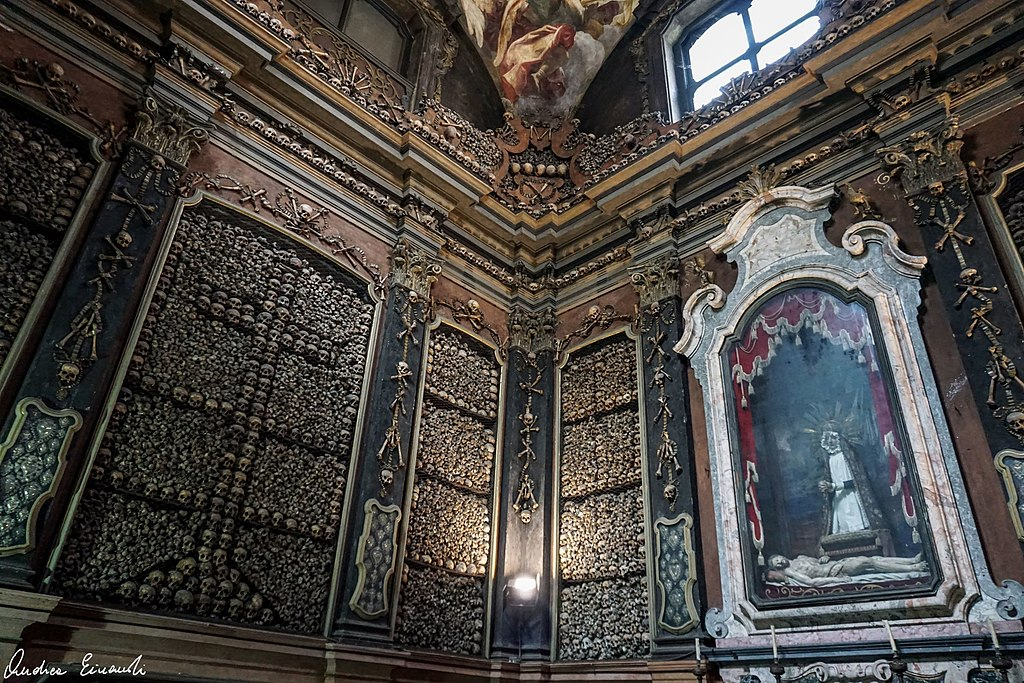
San Bernardino alle Ossa, Milan
San Bernardino alle Ossa is a church in Milan, northern Italy, best known for its ossuary, a small side chapel decorated with numerous human skulls and bones. In 1210, when an adjacent cemetery ran out of space, a room was built to hold bones. A church was attached in 1269. Renovated in 1679, it was destroyed by a…
-
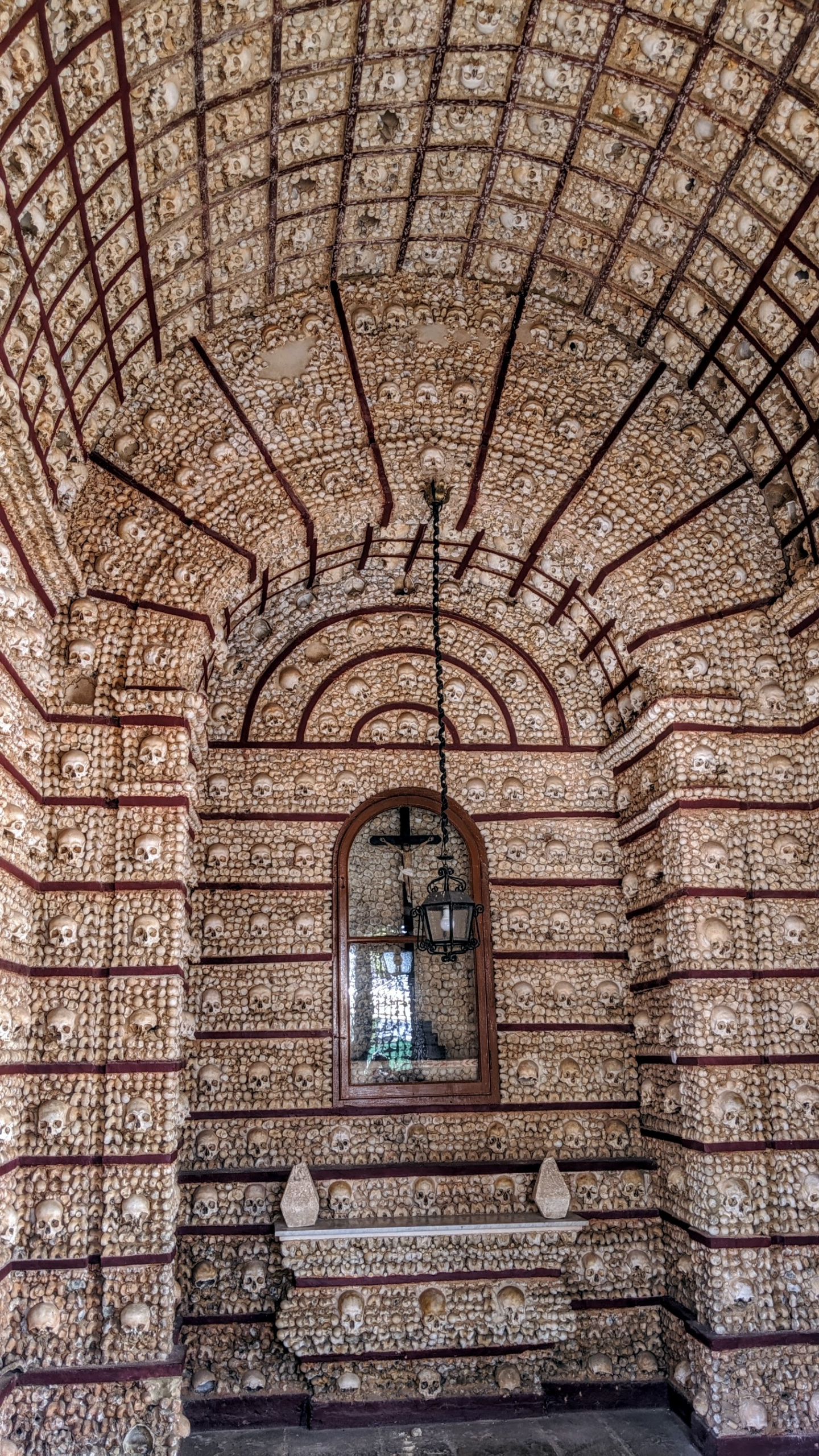
Chapel of Bones (Faro, Portugal)
The Capela dos Ossos (English: Chapel of Bones) is an ossuary chapel in Faro, Portugal, which belongs to the 18th century Carmelite church Nossa Senhora do Carmo. Above the entrance, there is the following inscription: Pára aqui a considerar que a este estado hás-de chegar which translates to Stop here and consider, that you will reach this state too. The 4 by 6 meter…
NOTES
- 🧬 Disease Table with Low Sodium Connection
- 🧂 Sodium Reduction and Sodium Replacement: A History of Reformulation and Exploding Diseases, Including Many Diseases Unheard of Before Deadly Sodium Policies
- 🧂 The DEADLY 1500 mg Sodium Recommendation predates the WHO’s formal global sodium reduction push by nearly a decade (and it’s even worse than that)
- 🧬 What Is Beta-Glucuronidase?
- When Sugar Was Salt: Crystalline Confusion and the Covenant of Sweetness
Tags
ADAM ASPARTAME Birds Blood Bones Brain Bugs Cancer Columba Cows crystallography Death Death cults Eggs Etymology Gastrin Gold Growth hormone History Hormones Insulin Liver Mere Perplexity Metal Monkey Business Mythology Paracetamol Plants Poison Pregnancy Protein Religion Reproduction Rocks Salt Slavery Snakes Sodium the birds and the bees Thiocyanate Tobacco Tylenol Underworld Venom zinc

